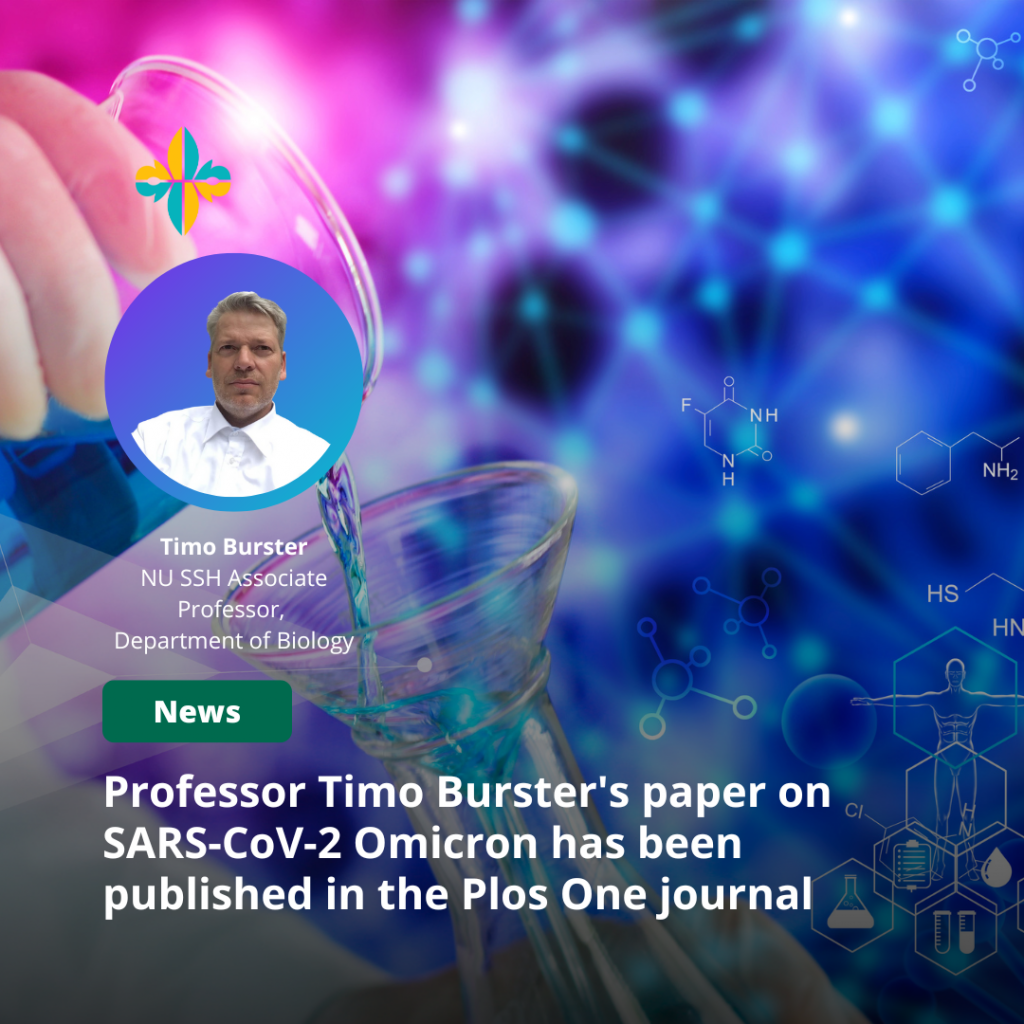Professor Timo Burster’s paper on SARS-CoV-2 Omicron has been published in the Plos One journal

Occurrence of a novel cleavage site for cathepsin G adjacent to the polybasic sequence within the proteolytically sensitive activation loop of the SARS-CoV-2 Omicron variant: The amino acid substitution N679K and P681H of the spike protein.
Zhadyra Mustafa, Hubert Kalbacher, and Timo Burster. 2022. PlosOne. 10.1371/journal.pone.0264723. IF: 3.24. SJR: 0.99, Q1
Our manuscript provides a biochemical explanation of why SARS-CoV-2 Delta and SARS-CoV-2 Omicron are more transmissible than other variants.
The occurrence of novel SARS-CoV-2 variants prompts serious concerns regarding increased transmissibility. The amino acid substitution at the polybasic sequence of the Spike protein is essential for the infection capacity of the virus. Here we demonstrate that the host protease furin increased the digestion rate of the polybasic sequence of the SARS-CoV-2 Delta variant (figure, left panel), and a novel cleavage site appeared in SARS-CoV-2 Omicron for another host protease cathepsin G (figure, right panel). We propose that our findings explain the increased transmission of SARS-CoV-2 variants biochemically.
Figure: Incubation of different peptides harboring the polybasic sequence of the Spike protein of SARS-CoV-1, SARS-CoV-2 (Wuhan), SARS-CoV-2 (Alpha), and SARS-CoV-2 (Delta) with furin (left panel). Cathepsin G was incubated with SARS-CoV-2 (Wuhan), SARS-CoV-2 (Alpha), SARS-CoV-2 (C.1.2), and SARS-CoV-2 (Omicron, right panel). The remaining peptide (blue bar) indicates a less or undigested peptide. Thus, a smaller bar diagram represents increased digest (higher substrate turnover) of the polybasic sequence.



